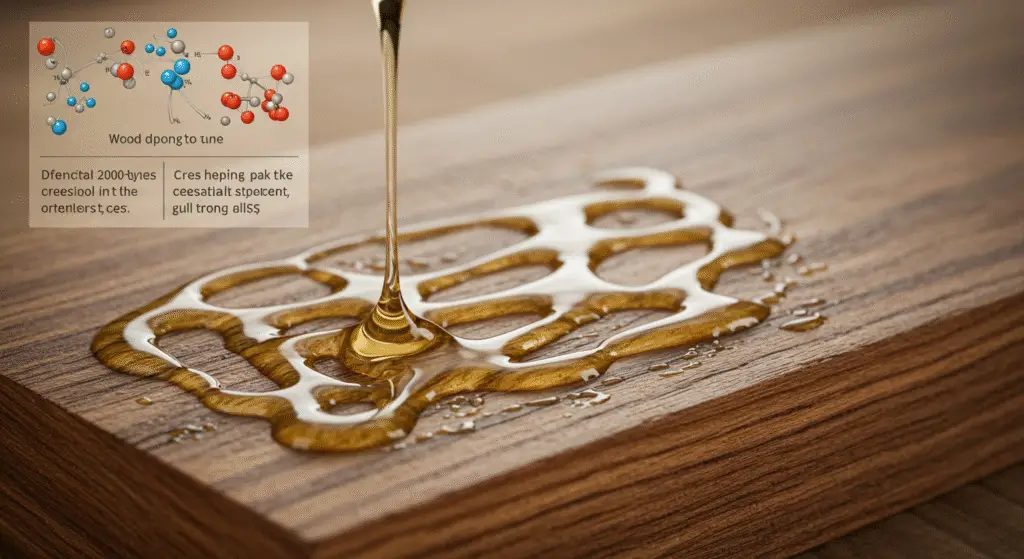
If you’ve ever worked on a woodworking project, you’ve probably asked yourself this question: how long does it take for wood glue to dry? Whether you’re fixing furniture or building something from scratch, knowing the drying time is key to getting strong and lasting results.
Drying times can vary, and many factors come into play. In this post, we’ll look at what affects the drying process, what to expect depending on your conditions, and how to make sure your glue sets properly for the best bond.
Understanding how long does it take for wood glue to dry
Wood glue doesn’t dry in just one fixed amount of time. It depends on the type of glue, the environment, and the kind of wood you’re working with. Most regular wood glues begin to set in about half an hour, but that doesn’t mean the bond is fully ready.
Many experts suggest waiting several hours or even a full day before putting any pressure on the joint. While it may feel dry to the touch, curing—the stage where glue reaches full strength—can take longer.
Different glue types change how long it takes to dry
Not all wood glues are the same. Some types dry faster than others. PVA glue, which is one of the most common for woodworking, starts to dry in about half an hour and usually cures within a day. Polyurethane glue, on the other hand, takes longer to cure but works well for outdoor projects because it’s waterproof.
If you’re using epoxy glue, keep in mind that it usually requires mixing two parts. It can take several hours to harden and sometimes longer to cure fully. Always check the label to know how long your glue needs to dry and cure.
How long does it take for wood glue to dry in different temperatures
Temperature plays a big role in drying time. If your workspace is warm and dry, your glue will likely dry faster. But if you’re in a cold garage or a damp basement, the drying process will slow down.
The ideal temperature for drying wood glue is around room temperature. Avoid working in extremely cold or very humid conditions. Too much moisture in the air can make the glue take longer to set, while low temperatures can stop it from drying at all.
Humidity affects how long does it take for wood glue to dry
Humidity also plays a big part in how fast or slow wood glue dries. When the air is humid, the glue may take longer to harden because it draws in moisture from the air. This is especially true for water-based glues.
Try to work in a space that has good airflow and is not too damp. Using a fan or a dehumidifier can help reduce the drying time, especially on rainy or humid days.
The kind of wood changes how long glue takes to dry
Another factor to consider when asking how long does it take for wood glue to dry is the wood type. Softwoods like pine absorb glue more quickly, allowing it to dry faster. Hardwoods like oak or maple may need more time for the glue to set and cure.
Also, the smoother the wood surface, the slower it may dry. Lightly sanding the wood before gluing can help the glue grip better and dry more evenly.

How much glue you use affects drying time
Using too much glue can slow down the drying process. A thick layer of glue between the wood pieces can take longer to set. A thin, even coat of glue is usually enough to form a strong bond.
When clamping the pieces together, a little glue should squeeze out along the edges. If there’s too much, wipe it off gently with a damp cloth. This will also help your project look cleaner and dry faster.
How to check if your wood glue is dry
One of the most common questions is how to tell when wood glue is dry. The easiest way is to wait the recommended time and gently test the joint. If it doesn’t move when pressed, and the glue around the edges is firm and not sticky, it’s likely dry.
However, dry to the touch does not mean fully cured. To be safe, wait at least a full day before putting stress or weight on the glued joint. Patience here can make a big difference in the strength of your final result.
Tips to help glue dry faster
If you’re short on time and wondering how long does it take for wood glue to dry, there are a few things you can do to speed it up. First, work in a warm, dry room. You can also use a fan to improve air circulation.
Avoid using a heater or hairdryer directly on the glue, as too much heat can cause problems. Some people also use fast-drying glues made for quick repairs, but even those should be given time to cure fully for the best results.
Common mistakes that slow drying time
Sometimes, glue takes longer to dry because of simple mistakes. Using too much glue, clamping the pieces too loosely, or working in the wrong environment can all make drying slower.
Another mistake is moving the project before it’s dry. Even if it feels dry, the inside may still be soft. Always give your project extra time, especially if you’re working with heavy-duty glue or large surfaces.
Why proper drying matters
Letting the glue dry properly makes your project stronger and longer lasting. Rushing through the process or removing clamps too soon can cause the joint to weaken or even fall apart later.
If you’re serious about building something that lasts, the answer to how long does it take for wood glue to dry is simple: long enough. It’s always worth the wait to get a solid, lasting bond.
Final thoughts
Now that you know how long it takes for wood glue to dry, you can plan your projects with more confidence. Whether you’re doing simple home repairs or tackling a major woodworking job, letting the glue dry and cure properly is one of the most important steps.
Different glues, wood types, and conditions can all change the drying time. But if you follow the tips above and give your project the time it needs, you’ll get better results and a stronger final product.
